“For Services Rendered…” 31st July 1917
Today marks the anniversary of the opening of the Third Battle of Ypres, 31st July 1917, also known as the Battle of Passchendaele. This was the start of a British-led campaign that would continue into November of that year, and result in almost half a million casualties from both sides. Even at the time, the decision to launch the offensive met with controversy, and its objectives, successes and failures are subjects that will continue to be debated for many years to come. While the merits of this particular campaign, and indeed the events and circumstances surrounding the First World War itself, are continuingly being scrutinised, these anniversaries can provide an opportunity to look back and take a moment to remember the individuals who took part.

This fragment of a cigarette packet is probably one of the smaller, more fragile objects that make up The Cameronians (Scottish Rifles) regimental museum collection. It is the type of thing that, under normal circumstances, might have easily been discarded by its owner without much thought. So why should such an item have been kept, and ultimately deposited in a museum? A look at the scribbled message on the reverse of the packet reveals the significance of such an everyday item.
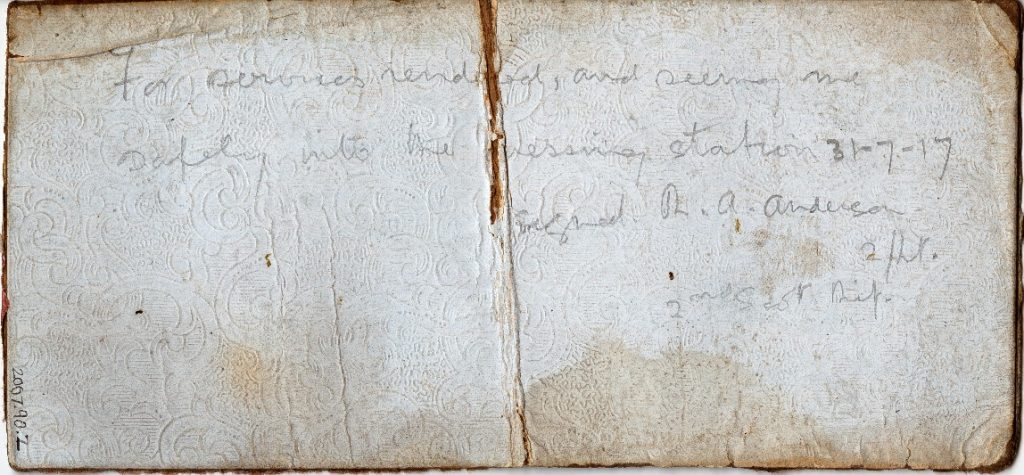
The message reads: “For services rendered, and seeing me safely into the dressing station 31-7-17, signed R. A. Anderson, 2/Lt, 2nd Scot. Rif.”
This was the dictated message from 2nd Lieutenant Roderick Andrew Anderson, of the 2nd Battalion The Cameronians (Scottish Rifles), to Private George Gould from Edinburgh. Lieutenant Anderson was just one of many of the 2nd Scottish Rifles who was wounded on 31st July 1917, and Private Gould was the man who helped the wounded officer to the Battalion dressing station, quite possibly saving his life. The men were of similar age, around 20 years old. Anderson’s wounds were serious enough that he was evacuated from the Front, and he would not return to the 2nd Battalion until 25th June 1918, almost a year later. Before leaving the Battalion area, Anderson asks for the above message to be written on his cigarette packet, and that it be passed to Private Gould as a small token of his thanks. Whether Private Gould was a smoker or not, we do not know. Perhaps he shared the cigarettes with his friends, or traded them for sweets or other useful items. What we do know is that he kept the packet with its message of thanks until the day he died. George Gould was killed on 6th January 1918, still serving with the 2nd Scottish Rifles. The cigarette packet was returned to his family with his personal effects; years later it, along with some photographs and his Memorial Death Plaque, was donated to the regimental museum collection.
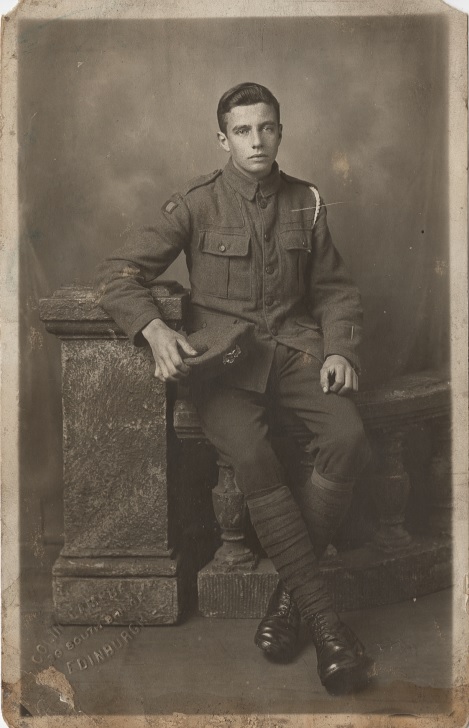
Private George Gould
This photograph of George was probably taken during a visit home. It was taken at Colin Campbell’s studio on 39 South Bridge, Edinburgh, not far from where George and his family lived, at number 63. The gold stripe worn on his lower left sleeve indicates he had been wounded on service. George had been recorded in a list of wounded soldiers sent to Stobhill Hospital on 8th May 1916, published in The Scotsman newspaper. At the time, George was serving with the 1st Battalion King’s Own Scottish Borderers – he subsequently transferred to the 2nd Scottish Rifles. The Wound Stripe alone is evidence that George had served at the Front by the time this photograph was taken. The patch worn on the right sleeve, below the shoulder seam, is that of the 8th Division, in which the 2nd Scottish Rifles served for most of the War’s duration. You can see an original example of this badge on our Online Collections browser – http://www.sllcmuseumscollections.co.uk/search.do?id=147158&db=object&page=1&view=detail
By the time Roderick Anderson returned to the 2nd Scottish Rifles, George had been killed and buried in Passchendaele New British Cemetery. Anderson would survive the First World War, finishing the War with the rank of Captain. In June 1919 he was awarded the Military Cross for his services in the First World War – the original citation for which reads:
“This officer has served with the Bttn since 1916 except when he was wounded. He took part in many engagements as a platoon commander and in the Battle of Ypres 31/7/1917 led his platoon with skill and determination. He takes a keen cheerful and intelligent interest in his work and has been at all times a conscientious hard working officer. Lately he has been performing the duties of Asst. Adjutant during whose absence he has done his work with considerable credit, both in action and out of the line. He is an exceptionally keen soldier.”
Roderick remained in The Cameronians (Scottish Rifles) after the First World War, serving with the 2nd Battalion in India and Kurdistan. He married in 1931, and had two children. In April 1935, Roderick resigned his commission from the British Army; he returned to his native New Zealand with his family to work in his father’s engineering business. Civilian employment didn’t quite agree with Roderick, and he joined the Royal New Zealand Air Force in 1937. During the Second World War, Roderick volunteered to serve once again with The Cameronians, and he duly joined the 1st Battalion in 1941, serving with them in Burma. He was wounded near Pegu in March 1942, by which point his age and the physically gruelling conditions of active service were taking it’s toll. He was posted to a Staff position and remained in service until the end of the Second World War, retiring with the rank of Lieutenant Colonel. Roderick’s health never quite recovered from his service in the Second World War, and he died in 1958 aged 60. Brigadier W. B. Thomas, an old comrade of Roderick’s since the two were at Sandhurst together in 1915, wrote of him:
“Roderick Anderson and I joined the Regiment from Sandhurst on the same day in April, 1916. We served together almost continuously until he retired and went to New Zealand in 1935. As he was employed with the New Zealand Air Force he need not have come back during the war, but such was his love for the Regiment that he was determined to serve with it. He rejoined the 1st Battalion in Secunderabad in 1941. Unfortunately there was not time for him to get as fit as the rest of us before he went to Burma. The arduous retreat inflicted a strain on his health from which he never fully recovered. Nethertheless he always pulled his weight and set an inspiring example. He was a wonderful friend and companion.”
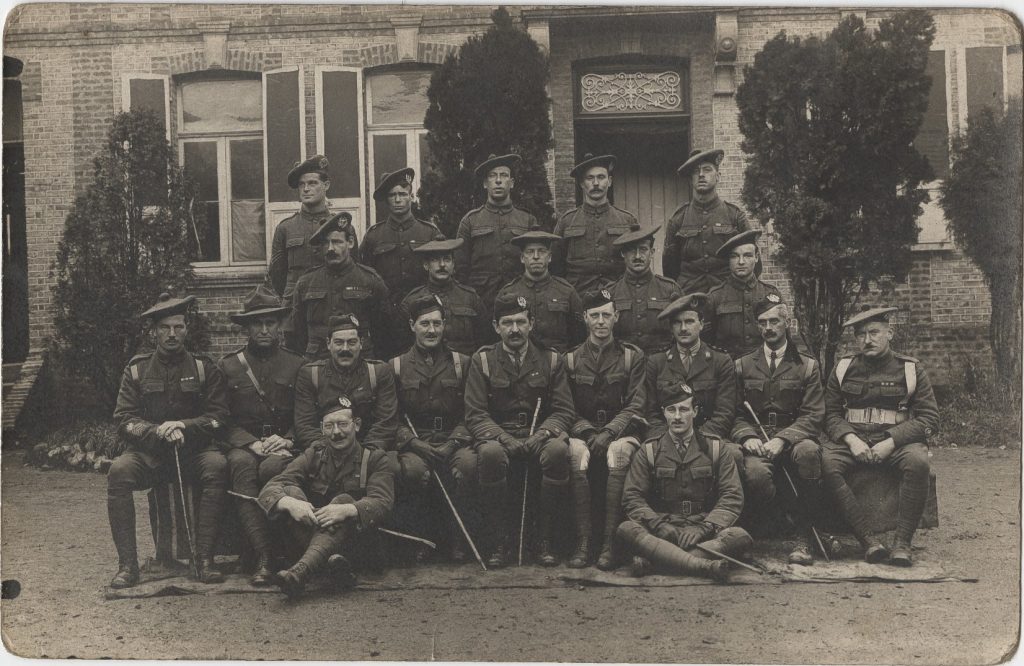
Roderick Andrew Anderson, seated cross-legged, right of front row. This photograph was taken shortly after the Armistice in November 1918, and shows Officers, Warrant Officers and Non Commissioned Officers of the 2nd Scottish Rifles.
The War Diary for the 2nd Scottish Rifles records that 38 officers and men of the Battalion were killed on 31st July 1917, and a further 146 wounded, while 19 men were reported missing in action. Roderick Anderson was among those wounded; perhaps his fate might have been different had it not been for George Gould.
Comments: 1
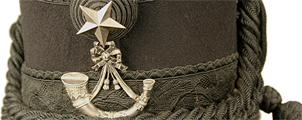
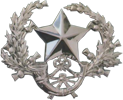

[…] In actuality, the Third Battle of Ypres was divided into several smaller battles which took place throughout the Ypres Salient from 31 July to 10 November 1917. Battalions of the regiment were present at almost every single one of these smaller engagements. Starting on 31 July, the 10th Battalion with the 15th Scottish Division attacked German positions around Beck House on the Frezenberg Ridge. It’s four companies were divided up between various battalions of the Division as extra strength to assist in their various objectives. Simultaneously the 2nd Battalion with the 8th Division attacked along the banks of the Hanebeek. […]